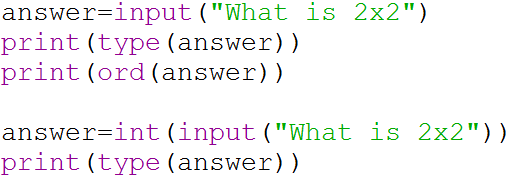The print() function displays a string to the screen. It can be used like this.
- print(“hello there”) – displays hello there
- print(4*4) – displays 16
- print(“4*4”) – displays 4*4
Note that the last line has quotes around the calculation causing the string to be displayed.
You can use either a single quote ‘ or double quotes ” within the brackets. More on this later.

